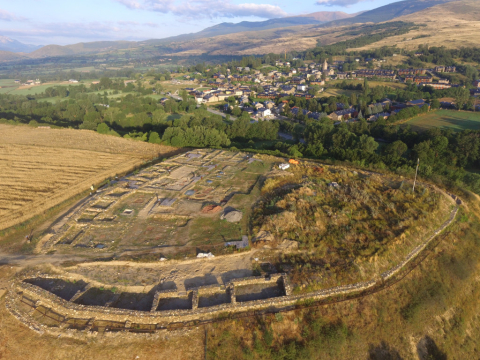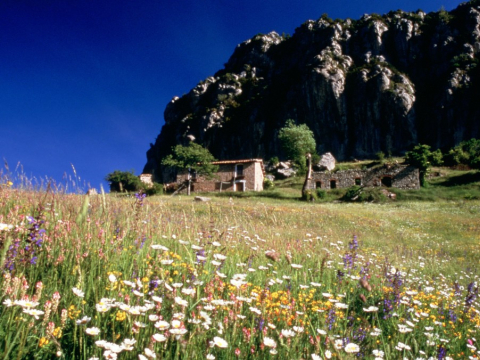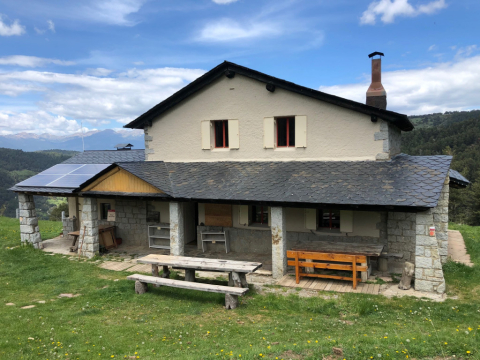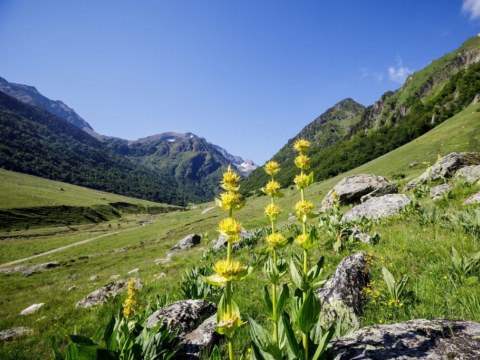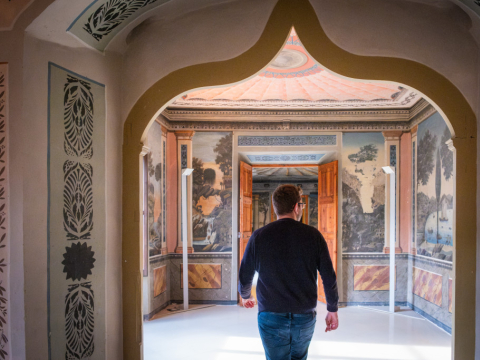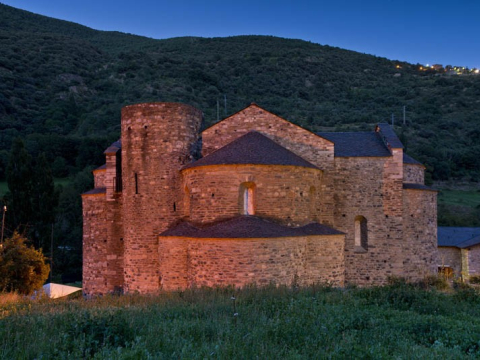It is a small town located in the French department of Aude, made up of stone houses arranged in narrow streets at the foot of the majestic castle, from where one of the last episodes of the fight against the Cathars took place. In the mid-13th century, Montsegur was an important refuge and defense for the Cathar church. In May 1243 the siege of the castle began. The French troops, about ten thousand men, arrived at Montsegur and surrounded the entire mountain to prevent the entry and exit of food,...
-
The Espai Ceretània Museum is an interpretation center for the archaeological site known as El Castellot.
-
A town formed by a 19th century mining colony that is currently completely uninhabited.
Municipality of Alta Cerdanya administratively belonging to the department of Pyrénées-Orientales. Located at 1,511 m above sea level, next to the Querol River. Above the town are the remains of the old castle, of which two slender rectangular towers and part of the wall still remain, and which dominated the passage through the valley.
Roof of the Path of Good Men. A large granite landmark marks the border between Andorra, Spain and France. The view from the pass is splendid, the pariatges is typical of these altitudes, bare and treeless. On the French side you can see the north face of Puigpedrós and the entire valley that flows into Porta. The pass is just below the Envalira peak, at 2,825 m, on the northern slope of which is the Pas de la Casa – Grau Roig ski resort. To the south you can enjoy the view of the entire Llosa...
The chapel of Our Lady of the Angels is located near some trees. Apart from the chapel, there is also a barbecue and a stone table with benches suitable for picnics. A few meters further on you can see the old forest refuge of Prat Xuixirà, dynamited in 1978.
The water from this canal already flows towards the Atlantic, towards Ariège and the Garonne. On the other hand, a few meters back, at the Pimorent (Puymorens) pass, the waters still flow south, towards the Mediterranean, through the Querol, Segre and Ebre rivers. The Pimorent (Puymorens) pass is the natural boundary between the two slopes, between Catalonia (to the south) and Occitania (to the north):
-
Mountain refuge with capacity for 22 people located in the middle of the Vall de l'Ingla at 1,610m within the Cadí-Moixeró Natural Park, surrounded by a wonderful forest and with views of Puig-Pedrós, the Engorgs valley and the Cadí mountain range.
Food, drinks, overnight stays and guided activities are offered.
Access by vehicle from Bellver de Cerdanya or Riu de Cerdanya and on foot from Bellver or Coll de Pendís.
Dogs are not allowed in the refuge.
-
Located in the north of the Pyrenees, it comprises a small valley of 4,150 hectares, with altitudes ranging between 900 and 2,750 meters. The rocks are mainly granitic and schistose, and have suffered the erosive action of glaciers over time.
In the high mountain ecosystems, other species of fauna are found, such as the golden eagle, the white partridge, the capercaillie, the woodpecker, the jay, the white-breasted blackbird, the raspinell and a significant density of chamois. It is the river that forms the backbone of the entire valley and which flows until Merenç (Mérens), it is the lifeblood of this region of the French Pyrenees. The river gives its name to the entire department of Ariège, a demarcation whose capital is Foix. The train track and the road follow the course of the river at the bottom of the valley.
-
Bagà goes far beyond its medieval past. In one of its most emblematic buildings, the Palau dels Pinós, we can find a hidden secret that many do not know, but which is just as interesting as the ancient legends. Romanesque church of great interest.
-
A magnificent building of Visigothic origin, the first Benedictine monastery in the Hispanic March. The current construction corresponds to the church consecrated in 1040; it consists of three naves, a central apse and three apses in the shape of a cloverleaf alluding to the Trinity. It is said that Bishop Fèlix d'Urgell studied there, which caused the monastery to be associated with the adoptionist heresy of the time. In 1040, the church was renovated and reconsecrated. Currently, once restored,...
The church has a single nave with side chapels, with a square presbytery that houses the chancel. There is the image of the Virgin of Corbera which dates back to the 15th century.

